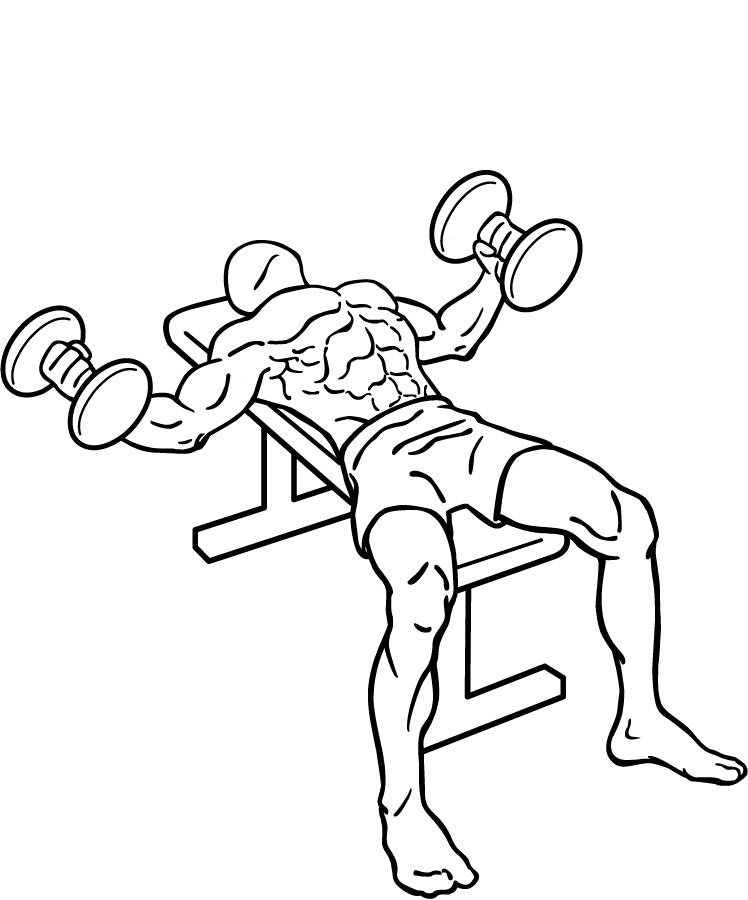Last Updated on September 25, 2014
When it comes to sculpting a powerful and well-defined upper body, few exercises are as effective as the dumbbell flyes. This classic movement targets the chest, triceps, and shoulders, making it an essential part of any strength training routine. In this comprehensive guide, we’ll delve into the intricacies of the dumbbell fly, explore its benefits, and provide you with expert tips to maximize your results.
Understanding the Dumbbell Fly
The dumbbell flyes is a strength training exercise primarily focused on the chest muscles, specifically the pectoralis major. However, it also engages the triceps and shoulders, making it a compound movement that enhances overall upper body strength. By isolating these muscle groups, the dumbbell fly helps in developing muscle definition and improving muscular endurance.
Step-by-Step Guide to Performing Dumbbell Flyes
To perform the dumbbell fly correctly and safely, follow these detailed steps:
- Set Up Your Position
- Begin by lying flat on a bench with a dumbbell in each hand.
- Ensure your feet are firmly planted on the ground for stability.
- Your back and hips should remain in contact with the bench throughout the exercise.
- Starting Position
- Lift the dumbbells above your chest with your arms fully extended.
- Maintain a slight bend in your elbows to prevent joint strain. This is your starting position.
- Executing the Fly
- Keeping that slight bend in your elbows, lower the dumbbells out to your sides in a controlled arc-like motion.
- Focus on stretching your chest muscles as you lower the weights.
- Returning to Start
- Slowly bring the dumbbells back over your chest using a controlled motion.
- Ensure that you maintain tension in your chest muscles throughout the movement.
- Return to the starting position and prepare for the next repetition.
- Repetition
- Repeat this motion for your desired number of repetitions, typically ranging from 8 to 12 reps per set for muscle building.
Tips for Maximizing Your Dumbbell Flyes
Performing dumbbell flyes with proper form is crucial for preventing injury and ensuring optimal results. Here are some expert tips to enhance your workout:
- Maintain Bench Contact: Always keep your back and hips in contact with the bench to stabilize your body and focus on working the targeted muscles.
- Controlled Movement: Avoid using momentum or swinging the weights. A slow, controlled motion ensures that you’re effectively engaging the muscles.
- Breathing Technique: Inhale as you lower the dumbbells and exhale as you bring them back up. Proper breathing helps maintain rhythm and focus.
- Weight Selection: Choose a weight that challenges you but allows you to maintain proper form throughout all repetitions.
- Warm-Up: Always warm up before engaging in any strength training exercise to prepare your muscles and reduce risk of injury.
Benefits of Incorporating Dumbbell Flyes into Your Routine
Adding dumbbell flyes to your workout regimen offers numerous benefits:
- Enhanced Chest Definition: By isolating the pectoral muscles, dumbbell flyes contribute significantly to chest development and definition.
- Improved Shoulder Stability: The exercise engages shoulder stabilizers, promoting joint health and reducing injury risk.
- Triceps Engagement: While primarily targeting the chest, dumbbell flyes also work on strengthening triceps.
- Versatility: Dumbbell flyes can be performed on flat, incline, or decline benches to target different areas of the chest.
Common Mistakes to Avoid
To get the most out of your dumbbell flyes while minimizing risk, steer clear of these common mistakes:
- Overextending Elbows: Keep a slight bend in your elbows throughout to avoid unnecessary strain on joints.
- Arching Back Excessively: Maintain contact between your back and bench; excessive arching can lead to injuries.
- Using Too Much Weight: Prioritize form over heavy weights; using too much weight can compromise technique and increase injury risk.
Integrating Dumbbell Flyes into Your Workout Plan
To effectively integrate dumbbell flyes into your workout routine, consider these strategies:
- Pair with Compound Exercises: Combine dumbbell flyes with exercises like bench presses or push-ups for a comprehensive chest workout.
- Frequency: Aim for two to three sessions per week focusing on upper body strength training.
- Progressive Overload: Gradually increase weight or repetitions over time to continue challenging your muscles and promoting growth.
Elevate Your Upper Body Training with Dumbbell Flyes
Dumbbell flyes are an invaluable addition to any strength training program aimed at building a strong, defined upper body. By following proper form and incorporating them strategically into your routine, you can enhance muscle definition, improve shoulder stability, and achieve impressive results. Remember, consistency is key—commit to regular practice of this exercise along with other complementary movements for balanced development.Whether you’re new to weightlifting or an experienced athlete looking to refine technique, mastering dumbbell flyes will undoubtedly elevate both performance levels as well as aesthetic goals!


Exercise images by Everkinetic.






